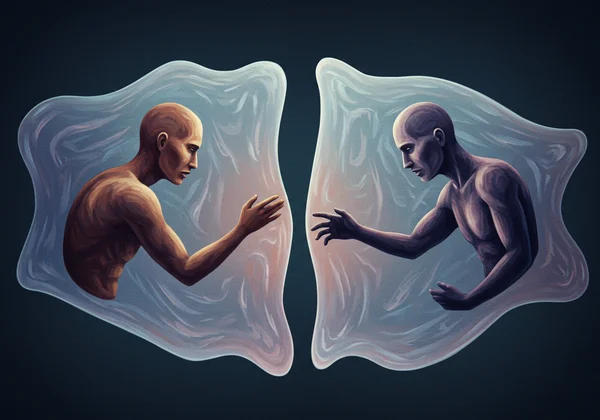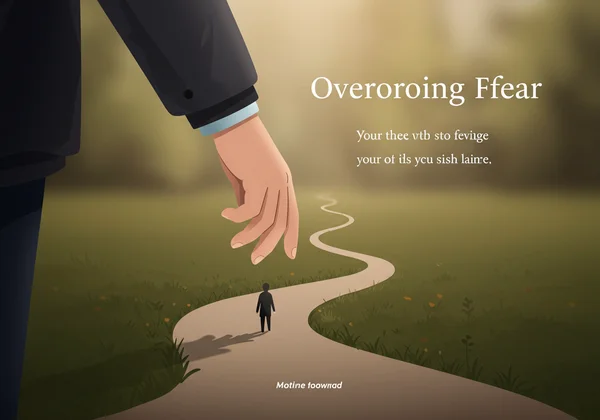Avoidant Personality Disorder: Symptoms, Test & Treatment
Do you constantly feel shy, inadequate, or intensely afraid of rejection? These feelings, when persistent and overwhelming, might be more than just introversion. This comprehensive guide explores Avoidant Personality Disorder (AvPD), a condition characterized by extreme social inhibition and hypersensitivity to negative evaluation. Understanding its signs is the first step toward building confidence and seeking support. If you're wondering if these patterns apply to you, a personality disorder test can offer initial clarity. How do I check if I have a personality disorder? For many, the journey begins with self-reflection and a desire for answers, and our free online screening is a confidential place to start.

This article will walk you through the symptoms of AvPD, its impact on daily life, and the pathways to finding support and healing.
Understanding AvPD Symptoms and Diagnostic Criteria
Avoidant Personality Disorder (AvPD) is a Cluster C personality disorder, a group characterized by anxious and fearful thinking or behavior. It's more than just shyness; it is a pervasive pattern of social avoidance, feelings of inadequacy, and an extreme sensitivity to criticism or rejection that can significantly disrupt a person's life. Individuals with these traits often want to connect with others but are held back by an intense, paralyzing fear.
To be clear, only a qualified mental health professional can provide a diagnosis. However, understanding the common signs, which are informed by resources like the DSM-5, can empower you to recognize these patterns in yourself or others and seek appropriate help.
What are the Core Signs of Avoidant Personality Disorder?
A person with strong AvPD traits typically exhibits a consistent pattern of behavior that includes several of the following signs:
- Avoiding activities that involve significant interpersonal contact: This isn't just about preferring a quiet night in. It’s about turning down job promotions, avoiding team projects, or skipping important social events out of fear of criticism or disapproval.
- Unwillingness to get involved with people unless certain of being liked: They need constant reassurance and guarantees of acceptance before they can open up, which can make forming new friendships feel nearly impossible.
- Showing restraint within intimate relationships: Fear of being shamed or ridiculed can cause them to hold back from sharing their true selves, even with partners or close friends.
- Preoccupation with being criticized or rejected in social situations: Their minds are often consumed by worry about saying or doing the wrong thing, leading to constant anxiety in social settings.
- Inhibition in new interpersonal situations: This stems from profound feelings of inadequacy. They see themselves as socially inept or personally unappealing.
- Viewing self as inferior to others: A core belief of being "not good enough" fuels much of their avoidant behavior.
- Reluctance to take personal risks or engage in new activities: The fear of potential embarrassment is so strong that it prevents them from trying new things or stepping out of their comfort zone.
The Impact of AvPD on Daily Life and Relationships
Living with these traits can be incredibly isolating. Professionally, it might mean missed opportunities and career stagnation, as the fear of evaluation outweighs the ambition to succeed. Friendships can be difficult to initiate and maintain, as the person may pull away or seem distant, leaving friends confused and hurt.
In romantic relationships, the fear of vulnerability can create a barrier to true intimacy. The individual may crave closeness but simultaneously push it away to protect themselves from potential rejection. This internal conflict is exhausting and can lead to loneliness, depression, and anxiety. Recognizing these patterns is a crucial first step, and a preliminary self-assessment can help you organize your thoughts before speaking with a professional.

How to Cope with AvPD Traits & Build Confidence
While professional treatment is the most effective path forward, there are strategies you can begin to practice to manage AvPD traits and slowly build confidence. The journey is about taking small, courageous steps toward challenging the fear that holds you back. It’s about learning that you are more capable and resilient than your anxiety tells you.
Remember, the goal isn't to become an extrovert overnight, but to reduce the distress caused by social fear and live a more fulfilling life.
Practical Strategies for Managing Social Anxiety and Fear of Rejection
-
Start Small: Challenge yourself with low-stakes social interactions. Make eye contact and smile at a barista, ask a store clerk for help, or give a simple compliment to a colleague. These small wins build momentum.
-
Challenge Negative Thoughts: When you feel the fear of rejection, ask yourself: "What is the evidence for this fear?" and "What is a more balanced way of looking at this?" This cognitive technique helps break the cycle of automatic negative thinking.
-
Practice Mindfulness: Anxiety often lives in the future, worrying about what might happen. Mindfulness brings you back to the present moment. Focus on your breath or the sensations around you to ground yourself when you feel overwhelmed.

Improving Self-Esteem and Fostering Meaningful Connections
Building self-esteem is foundational to overcoming avoidance. It starts with shifting your internal monologue from one of criticism to one of compassion. Acknowledge your efforts, no matter how small they seem. Celebrate the courage it took to even try.
Focus on developing connections with one or two trusted individuals where you feel safe. Be open about your struggles if you feel comfortable. True connection blossoms from authenticity, not perfection. If you are curious to explore your traits in a private setting, our online tool can provide a structured starting point.
AvPD Treatment Options and Paths to Healing
Seeking professional help is a sign of strength. Therapy provides a safe, non-judgmental space to explore deep-seated fears and develop effective coping mechanisms. Finding the right therapist and treatment approach is key to a successful recovery journey. Many people find that understanding their traits through a scientifically-informed screening helps them have a more productive first conversation with a therapist.

Therapeutic Approaches: CBT, DBT, and Psychodynamic Therapy
Several evidence-based therapies have proven effective for individuals with AvPD traits:
- Cognitive-Behavioral Therapy (CBT): This is often the first line of treatment. CBT helps you identify and challenge the negative thought patterns and beliefs that fuel your avoidance. It also involves gradual exposure to feared social situations in a controlled way.
- Dialectical Behavior Therapy (DBT): While often associated with BPD, DBT's skills in mindfulness, distress tolerance, and interpersonal effectiveness are highly beneficial for AvPD as well.
- Psychodynamic Therapy: This approach delves deeper into past experiences and unconscious fears that may have contributed to the development of avoidant patterns. It aims to provide insight into the roots of the anxiety.
The Role of Support Systems and Self-Care in Recovery
Therapy is just one piece of the puzzle. Building a supportive network is vital. This could be a trusted family member, a loyal friend, or a support group for social anxiety or AvPD. Sharing your experiences with people who understand can combat the profound loneliness that often accompanies this condition.
Self-care is also non-negotiable. This means ensuring you get enough sleep, eat nutritious food, and engage in physical activity. These fundamentals regulate your mood and build your resilience to stress, making it easier to face your fears.
Taking the First Step: Your Journey Towards Understanding and Support
Understanding Avoidant Personality Disorder is the first courageous step on a journey toward healing and connection. Recognizing the signs, learning coping strategies, and knowing that effective treatments are available can replace fear with hope. The path may not be easy, but it leads to a life where you are not defined by your anxieties but by your true self.
If what you've read resonates with you, gaining more clarity can be your next step. Taking a confidential, free personality disorder test can provide you with initial insights into your own patterns of thinking and behavior. It is not a diagnosis, but it is a powerful tool for self-reflection and a bridge to seeking professional guidance. Take the first step today to begin your journey toward greater self-awareness and a more connected life.
Frequently Asked Questions About Avoidant Personality Disorder
How do I check if I have a personality disorder?
The only way to receive an official diagnosis is through an evaluation by a qualified mental health professional, such as a psychiatrist or psychologist. However, a helpful first step can be taking a scientifically-informed screening tool, like the confidential screening tool we offer. It can help you organize your concerns and provide initial insights to discuss with a professional.
What are the 10 signs of personality disorder?
There isn't a single list of 10 signs for all personality disorders, as there are 10 distinct types with unique criteria. However, general indicators often involve pervasive and inflexible patterns in thinking, feeling, or behaving that cause significant distress or impairment in areas like work, relationships, and self-image. These patterns deviate markedly from cultural expectations and are stable over time.
How do people with personality disorders behave?
Behavior varies widely depending on the specific disorder. Someone with AvPD traits may behave in a shy, withdrawn, or timid manner due to fear of rejection. In contrast, someone with traits of a different disorder might behave dramatically or impulsively. The common thread is a persistent pattern of inner experience and behavior that causes problems in functioning.
At what age do personality disorders usually develop?
Personality disorders typically begin to manifest in adolescence or early adulthood. While the underlying temperament may be present earlier, a diagnosis is generally not made until a person is 18 years or older, as personality is still developing during the teenage years. The patterns must be enduring and not better explained by another mental disorder or developmental stage.